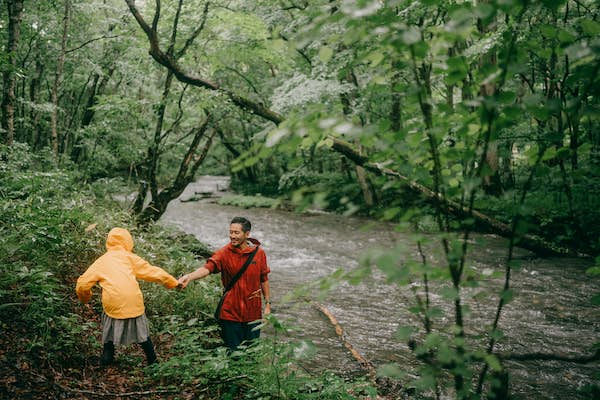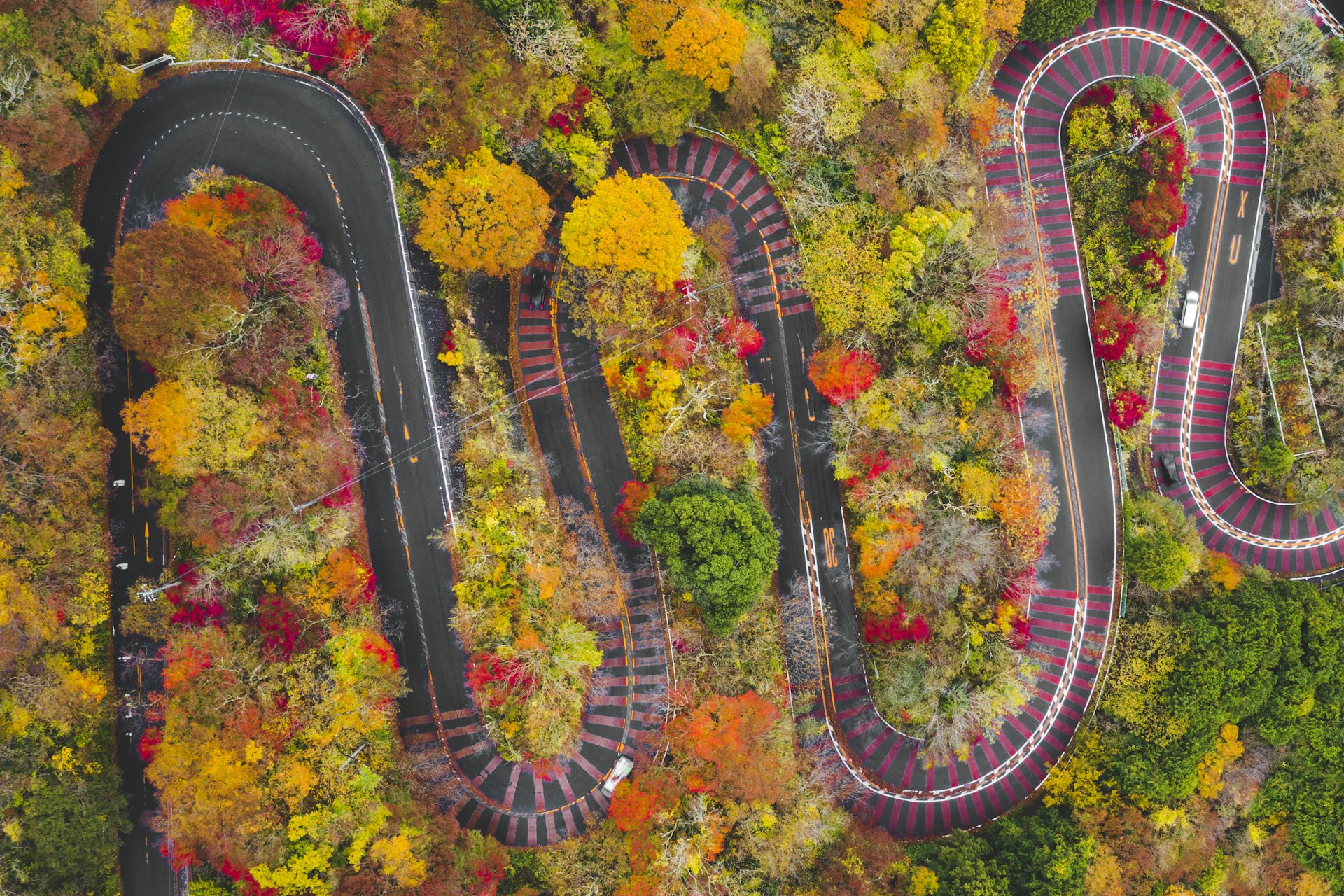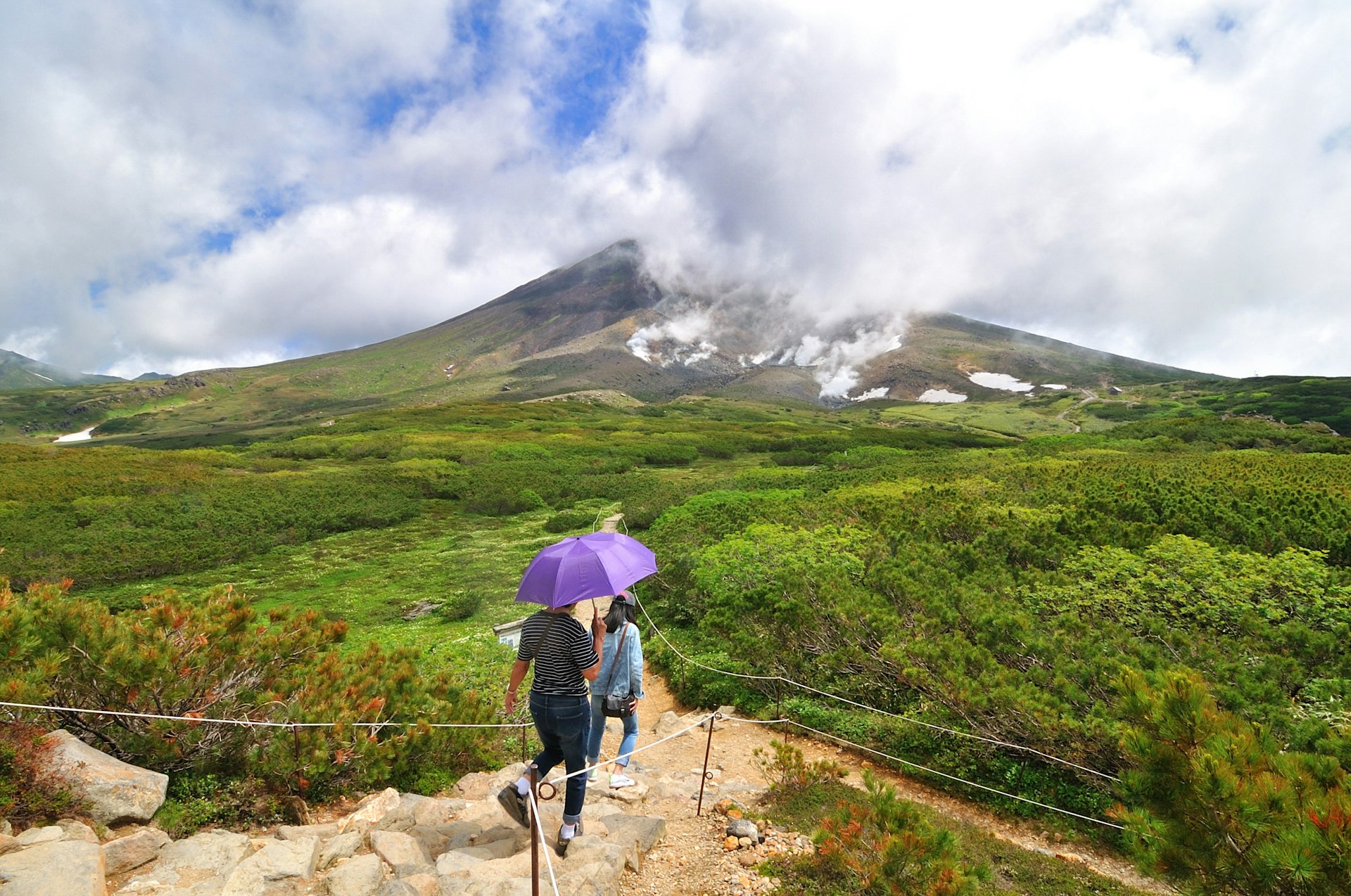
Whether or not you are swerving alongside the asphalt in the wild and expansive north, skirting the towering bluffs and wave-battered coasts of western Honshu, or winding by the archipelago of the Inland Sea, you may’t beat the liberty of being behind the wheel. And as an island nation with almost three-quarters of its terrain lined by mountains, Japan appears custom-built for scenic road trips.
So buckle up for our 10 favourite road trips in Japan.

1. Izu Peninsula to Hakone
Best drive from oceanside to Mt Fuji highs
Minamiizu – Hakone; 115km (71 miles), 1-2 days
The epic route from Izu Peninsula to Hakone is a favourite amongst driving fans. From the Izu Peninsula’s southern tip, the coastal freeway passes by Shimoda, a surfers’ hang-out and historic port city, and Higashiizu, web site of the fabled moon road energy spot the place waxing moons hint a beam of sunshine throughout the Pacific, supposedly imbuing any witness with a divine vitality. Additional north, the road hugs the shores of Lake Ashi in Hakone, from the place you’ll get scintillating views of Mt Fuji on a transparent day.
End this road journey in model on the Hakone Skyline, a famously twisty tōge (mountain road) that served as an inspiration for the Hollywood film The Quick and the Livid: Tokyo Drift (although the precise mountain drift race scenes in the movie had been shot in LA).
Native tip: The driftway is considered one of 30-plus “Melody Roads” in Japan – so named for the tactile grooves that emit musical notes as tires roll over them.
2. The Seto Inland Sea alongside the Shimanami Kaidō
Best for scenic island-hopping through suspension bridges
Onomichi – Imabari; 70km (43 miles), enable sooner or later
A well-liked biking and scenic driving route, the Shimanami Kaidō traces lazy “S” shapes alongside the Seto Inland Sea through wind-whipped suspension bridges and island villages misplaced in time. Drivers who transfer at a leisurely tempo will probably be rewarded with watercolor views of the Inland Sea haze silhouetting the numerous humpbacked islands contained inside it.
Detour: For a detour you gained’t neglect, try Kōsan-ji, a singularly kitschy temple on the island of Ikuchi-jima. This garish non secular monument fuses a litany of architectural kinds, from Italian marble foundations to historic Chinese language iconography.
3. The Noto Peninsula drive
Best for dramatic coastal seascapes
Takaoka – Kanazawa; 236km (147 miles), 1-2 days
From the picture-perfect dawn of Amaharashi Seaside to the bracing shoreline of Ishikawa Prefecture, this road journey throws down a few of Japan’s most interesting coastal surroundings.
The route facilities round Noto, a darkish, rugged peninsula house to solemn shrines and dramatic seascapes. In west Noto, you’ll additionally discover the Shiroyone Senmaida rice terraces tumbling down towards the ocean, and the port metropolis Wajima with its 1000-year-old morning market. End the journey in Kanazawa, a former samurai stronghold and custodian of Japan’s conventional arts and crafts.
Planning tip: The town is house to numerous enlightening museums, together with the spectacular 21st Century Museum of Up to date Artwork.

4. Coast-to-coast Hokkaidō
Best for beautiful northern countryside
Rausu – Hakodate; 700km (435 miles), 3-Four days
Hokkaidō, Japan’s northernmost island, is a driver’s dream: huge, untamed, sparsely populated and veined with high quality roads (although they’re best averted in the snow-dumped winter). The really helpful coast-to-coast drive traverses over 400 miles (644km) of open road from the UNESCO-recognized Shiretoko Peninsula in the east to the previous colonial port city of Hakodate in the west.
It is a journey best savored, given the wealth of pure surroundings and worthwhile diversions: the 17-mile (27km) pencil-straight “Road to Heaven” freeway (天に続く道); the calderas and primeval forests of Akan-Mashū Nationwide Park; the Curler Coaster Road zigzagging vertically by the pastoral farmlands of Biei; and Sapporo, a full of life leisure hub and the most important metropolis north of Tokyo.
5. Central Western Japan: Shimane to Kyōtango
Best for cool geology, chill shoreline and an historic shrine
Iino-Ura – Ine; 355km (22o miles), 2-Three days
The scenic drive from Iino-Ura (Shimane) to Ine (Kyōtango) snakes between dense forests and a sparsely populated, green-swept shoreline. Alongside the best way, you’ll hit Izumo, house to considered one of Japan’s oldest shrines (Izumo Taisha), the glowing bay of Lake Shinji in Matsue Metropolis, and Japan’s solely giant dune system at Tottori’s San’in Kaigan Geopark.
Within the Kyōtango area, rolling hills and crystal blue waters set the scene to your closing vacation spot: Ine, a picture-book village famed for its funaya (fishing boat homes) constructed on stilts above the shore.

6. Kyūshū: Mt. Aso to Cape Sata
Best for absorbing subtropical volcanic vibes
Mt. Aso – Cape Sata; 322km (200 miles), 2-Three days
Drive by the rolling grasslands of Kumamoto to seek out Japan’s largest caldera and energetic volcano, Mt. Aso. The Aso Panorama Line gives the best course, weaving alongside the caldera’s outer rim and perpetually casting its gaze towards the belching volcano in the center. From Aso, head south alongside the backbone of Kyūshū towards essentially the most southern tip of Japan’s 4 foremost islands, Cape Sata.
Planning tip: Earlier than you arrive on the observatory pinned to the Pacific coast, take into account an evening at one of many many onsen cities en route, or an in a single day keep in the laidback subtropical metropolis of Kagoshima to take pleasure in some black pork, sweet-potato shōchū (distilled liquor) and views of volcano Sakurajima seemingly floating on the bay.
7. Tōhoku
Best for exploring Japan’s rural backroads
Fukushima Metropolis – Aomori Metropolis; 335km (208 miles), 2-Three days
Tōhoku, a area whose identify means “northeast,” is webbed in immaculate driving roads that carve by its nationwide parks, virgin forests, and the cities and cities nonetheless recovering from the 2011 Nice East Japan Earthquake.
The journey from Fukushima to Aomori swerves previous the green-coated islets of Matsushima Bay – stated to have put the 17th-century father of Japan’s haiku poetry, Matsuo Bashō, puzzled – and the foamy seascapes and knobbly sea stacks of the 1000km-long (621km) Michinoku Coastal Path.
Detour: High detours embrace the winding road to the big volcanic crater lake at Mt Zaō in Miyagi Prefecture, and the road circumnavigating Aomori’s pristine Lake Towada, whose serene waters you may paddle by kayak.

8. Coastal Wakayama
Best for a fort, onsen and sacred trails
Wakayama Metropolis – Shingu; 180km (112 miles), enable sooner or later
Wakayama Prefecture sits on the bulbous Kii Peninsula south of the Osaka-Kyoto conurbation and is the gateway to the misty forests of the Kumano Kodō pilgrimage path.
The 100-plus-mile (160km) coastal road skirts Wakayama’s 16th-century feudal fort and the onsen (scorching spring) resort city of Shirahama, the place night suns set behind the moon-shaped gap of Engetsu-tō Island. The toothy rock options and hovering cliffs of Kushimoto in the south will equally vie to your consideration earlier than the route culminates in Shingu on the Mie Prefecture border, the place Kamikura Shrine marks the spot upon which Japan’s Shinto gods are stated to have first descended to the earth.
9. Shikoku’s 88 Temples Pilgrimage
Best for meditative magic, secret surf spots and solitude
Naruto – Sanuki; 1200km (745 miles), two weeks
It might appear antithetical to embark upon a pilgrimage on 4 wheels. However with 88 particular person temples to find alongside 1200 kilometers of terrain on the Shikoku Henro (Pilgrimage) – devoted to the founding father of Shingon Buddhism, Kōbō Daishi – you’re going to need all the assistance you may get.
Getting into from Kōbe alongside the Akashi-Kaikyo Bridge, the world’s longest suspension bridge with a foremost span of two kilometers, is really helpful for jaw-dropping sea-to-coast vistas. The temple route traverses all 4 Shikoku prefectures, passes by its most bustling port cities, and encourages loads of stops for bucolic forest walks, onsen soaks and brief temple sojourns.
Native tip: If you happen to get misplaced, hold your eyes peeled for white-clothed pilgrims replete with bamboo strolling sticks trudging alongside the roadsides.
10. Tsushima
Best for distant historic websites and remoted magnificence
Cape Tsutsu – Kankoku Observatory; 70km (43 miles), 1-2 days
Restricted entry to public transport and an abundance of lush coastal surroundings make Tsushima excellent for exploring on a road journey. The titular island set the scene for the critically acclaimed 2020 PlayStation recreation Ghost of Tsushima.
Although solely 43 miles (70km) north-to-south, the small island bisecting the Korea Strait is teeming with pure and artifical wonders: the Kaneda Fortress ruins, the lonely Watatsumi Shrine, islet-littered Asō Bay, and the Korean-style Kankoku Observatory on the island’s northern tip, which, on a transparent day, supplies views of Busan in South Korea. Day hikers can summit considered one of Tsushima’s forested peaks, whereas its rivers and seashores supply loads of inviting spots to chill out alongside your island drive.